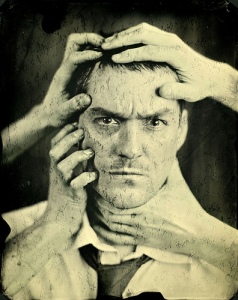
Photo Credit: lorrainemd via Compfight cc
Let’s face it – we’re all experts at putting things off. Or maybe we just don’t know how to handle the seemingly unconnected mass of demands that daily life places on us – so we don’t do anything. Over the years I’ve left a trail of dead blogs and websites, neglected running plans, late bills, and abandoned projects. It’s easy to be enthusiastic about a new idea or to put together a to-do list, but actually getting things done is another matter. I’m pretty disciplined about my life now, but I wasn’t always that way. A personal hobby I was becoming frustrated with changed how I approach my whole life.
My interest in productivity strategy began when I was searching for the most effective ways to learn the Japanese language. I’d spent a few years without making much progress and needed to learn, well, the best ways to learn. I started studying books and articles about time management and how the brain works. I was able to apply this knowledge not only to learning Japanese, but to the rest of my life as well. And I’ve been amazed at how well it works.
So here are my six favorite strategies to keep my life from losing momentum and to keep myself on track
1 – Know When You Work Best
I used to be a night owl. It wasn’t unusual for me to stay up until 3a.m. most days. Now that’s changed. I have an early commute to work in the city and I like to wake up early on weekends because I’m a long-distance runner. Staying up late doesn’t work for me anymore.
Find a time when you work best – when you aren’t mentally groggy and feel you can really get into your work. I like to wake up at about 5a.m., make some coffee, read articles, and type out a rough draft or two for my next week of writing. Obviously some tasks do have time constraints – you can’t make business calls at 2a.m. – but set aside some of your important tasks for when you feel most alive.
2 – Know Where You Work Best
My apartment isn’t noisy or distracting – it’s just me and my wife here. But something about being at home and in familiar settings just doesn’t work for me. I prefer to go to a library or coffee shop when it’s time for an important task. I find that having a set-apart place to work helps me focus. And because going out requires a time commitment, I’m more likely to stay focused on my work.
Go somewhere with the intention of getting things done. Maybe that’s the coffee shop or maybe your home office works for you. But try new locations now and then to prevent becoming too familiar with a place. This will keep your creativity stimulated and keep you from getting bored.
3 – Eliminate All Distractions
All of them. No phone. No Facebook. No email. No notifications. Many studies have shown that multitasking is terrible for productivity. Do you know that feeling you have when you’re really getting into your work? Time flies by. Your mind is clear. Distractions totally kill that. Even a few seconds of distractions bring you out of that mental sweet spot.
Keep everything turned off when it’s time to work. You’ll be surprised at how creative you can be when you give your brain a chance to focus on one thing for a while.
4 – Finish Important Tasks First
Make a list of everything you need to get done – but pick out two or three tasks that you would feel real good about getting done that day. Put those on the top of the list. Remember when I said I like to wake up early? I love to learn new things and keep up with my writing, so those are the first things I do every day. And when I get something I love done at the beginning of the day, it sets a positive momentum for the rest of the day.
5 – Set Aside 90-Minute Chunks Of Time
Even the best of us can only focus for so long before our brains need a break. After about 90-120 minutes our ability to focus, to retain new information, and to solve problems is dramatically reduced. So set aside 90-minute blocks of time throughout the day for focused work. Then take a break.
I use a modified Pomodoro Technique approach: work 25 minutes, 5 minute break, repeat until 90 minutes has passed. After that – take a 15-30 minute break. Repeat as needed. When I first started using this approach, I was pleasantly surprised at how much I was able to get done each day by setting side times for focused, distraction-free work.
6 – Coffee, Beer, or Water
It hardly goes without saying, but the caffeinated brain is more alert than the uncaffeinated brain. Caffeine is very beneficial for keep focus. Less commonly known is the ability of beer to help you be more creative. Alcohol relaxes the part of your brain that processes new information and helps you focus on making connections between existing memories and knowledge – the key to creativity and originality.
Don’t overdo it though. A caffeine crash is self-defeating for focus, and too much beer just makes you a drunk. Keep it to once or twice a week – and no more than two cups a day. For those who don’t drink caffeine or beer – try a big cup of water. Water has been shown to increase mental focus and give energy. So there’s help for everybody.
Go Do It
Now review these steps and get your day started. Write down everything you do for the next few days using these steps and the time it took you to complete them. See if you notice how much more efficient you are. And with all that time you save – make sure to take a little bit of time to relax and do something you enjoy. We’re not machines.
This is a system I’ve learned and developed over the last couple years to keep my creative momentum moving and to make sure my daily tasks all get done. I’ve found that I’m much more productive with a few hours of focused time than with a whole day of just winging it. And my Japanese got better too.
What strategies do you use to get things done? How have you implemented some of these strategies in your daily life? Leave me a comment with your thoughts and tips. Check out my Facebook page and Twitter account. And be sure to share this article with someone who needs it.


 “I will always be creative, curious, and contribute things of value to other people – and they will be invited to share in my wonder. I will use my gifts of curiosity, wisdom, creativity, and encouragement to build platforms that will heal and influence people. Those around me will feel genuinely valued and supported in accomplishing their passions and goals. I will not try to fit myself into a niche, but rather, I will cast aside fear and create something out of who I really am – out of genuine passion. My family will take priority above all the other responsibilities of life and will never feel that I am absent or unavailable.”
“I will always be creative, curious, and contribute things of value to other people – and they will be invited to share in my wonder. I will use my gifts of curiosity, wisdom, creativity, and encouragement to build platforms that will heal and influence people. Those around me will feel genuinely valued and supported in accomplishing their passions and goals. I will not try to fit myself into a niche, but rather, I will cast aside fear and create something out of who I really am – out of genuine passion. My family will take priority above all the other responsibilities of life and will never feel that I am absent or unavailable.”